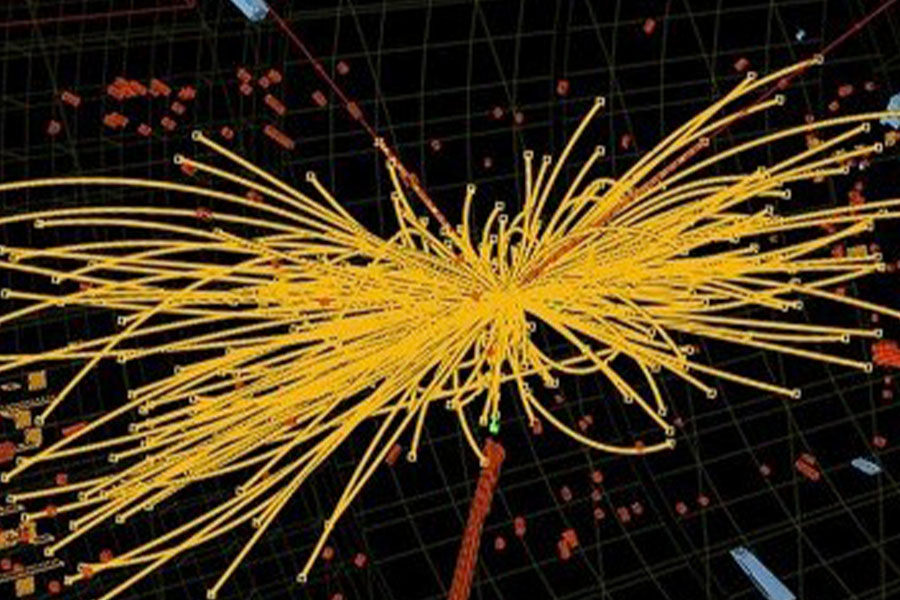FSU Department of Physics to celebrate 10th anniversary of Higgs boson discovery

Florida State University’s High Energy Physics Group, part of the Department of Physics in the College of Arts and Sciences, will gather Thursday, June 30, to celebrate the 10-year anniversary of the discovery of the Higgs boson, a fundamental building block of our universe.
The local gathering, from 1-3 p.m., in Room 701 of the Keen Building, will coincide with a larger virtual event hosted by a consortium of global institutions at that same time.
On July 4, 2012, researchers working on experiments at the Large Hadron Collider, located at the European Organization for Nuclear Research facility near Geneva, Switzerland, announced the discovery of a new particle that may contain properties of the elusive Higgs boson. FSU researchers were among hundreds of scientists who served crucial roles in the search for the Higgs including professors of physics Todd Adams, Laura Reina, and Harrison Prosper, the Kirby Kemper professor of physics, and alumnus and data scientist Joseph Bochenek, and computer scientist Kurtis Johnson, who worked with Prosper on key data analyses.
“The discovery of the Higgs Boson, 10 years ago, was a special moment that was amplified through the international physics community. Florida State University physicists were involved every step of the way, from the origins of the project to its completion at CERN,” said Sam Huckaba, dean of the College of Arts and Sciences. “It is a great pleasure to recognize this achievement and the role played by our local physicists.”
A boson is a particle that carries a force, and the Higgs mechanism is a simple, far-reaching idea that explains the origins of mass in particles. Mass is not an intrinsic property of a particle, but rather is generated through interaction with the Higgs boson.
“The discovery of a new particle is always exciting, but this one was especially so. Physicists had been searching for the Higgs boson for several decades and to see the evidence rise out of the data is such a clear way was amazing. The fact that two experiments independently saw similar results was beautiful. In the years since, we have confirmed the new particle is the Higgs boson and now we finally have this missing piece of the standard model of particle physics,” Adams said. “Ten years later, it is still fun to remember waking up in the middle of the night to watch the announcement from CERN.”
The Standard Model of Particle Physics has been proven to correctly explain the elementary particles and forces of nature through decades of tests, but without the Higgs boson, the model failed to explain how most of these particles acquire their mass, which is key in the formation of the universe. The Higgs is associated with a field that gives mass to other fundamental particles likes electrons and quarks, and it’s said to be what caused the Big Bang that created the universe billions of years ago.
FSU’s High Energy Physics group, established in 1957 as the first high-energy physics program in the Southeast, is composed of more than four dozen faculty members, post-doctoral researchers, students, and research scientists working as experimentalists and theorists.
Register to attend the celebration virtually by visiting the official event page, and read more about the discovery.

